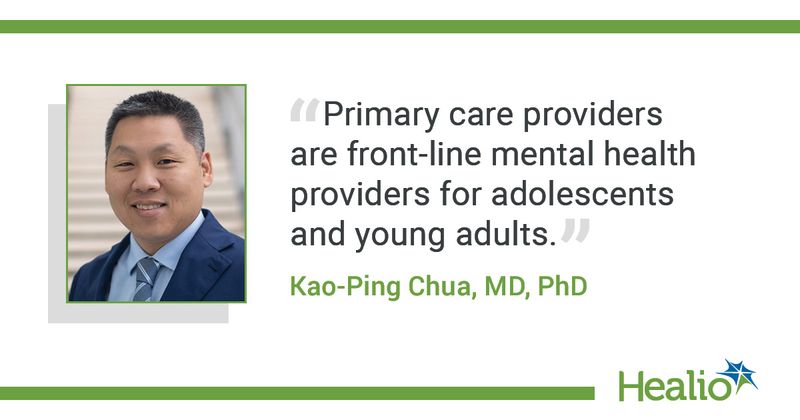Youth antidepressant prescriptions accelerated during after pandemic
Key takeaways:
- Antidepressant prescriptions for adolescents and young adults accelerated after the pandemic.
- The increase was driven by girls and young women, whereas prescribing fell among young males.
The number of adolescents and young adults with prescriptions for antidepressants accelerated during and after the COVID-19 pandemic, according to research published in Pediatrics.
According to one of the researchers, the study was prompted by evidence suggesting that hospitalizations and ED visits for mental health conditions had increased among adolescents and young adults during the pandemic.

“The only national studies that had examined changes in antidepressant dispensing to this population during the pandemic were limited to data through 2020,” Kao-Ping Chua, MD, PhD, assistant professor of pediatrics at the University of Michigan Medical School, told Healio. “I wanted to use more recent national data to examine the degree to which antidepressant dispensing to adolescents and young adults changed during the pandemic and to evaluate for heterogeneity in any changes by age group and sex.”
Chua and colleagues studied data from the IQVIA Longitudinal Prescription Database on antidepressant prescriptions for adolescents aged 12 to 17 years and young adults aged 18 to 25 years occurring from 2016 to 2022. The database reports dispensing from most retail, mail-order and long-term care pharmacies in the United States.
In total, it showed 221,268,402 antidepressant prescriptions dispensed to 18,395,915 people, 64.4% of whom were female and 35.8% of whom were male. Antidepressant dispensing started accelerating from March 2020 onward, rising 63.5% faster than the rate of change before the pandemic.
“This increase is entirely attributable to increased antidepressant use by teenaged girls and young women,” Chua said. “In contrast, the antidepressant dispensing rate changed little after March 2020 among male young adults and actually declined among male adolescents aged 12 to 17 years.”
Specifically, antidepressant dispensing rates grew faster for girls and women during and after the pandemic, accelerating by 129.6% for teenaged females aged 12 to 17 years and 56.6% for women aged 18 to 25 years.
“Studies suggest the mental health of male adolescents worsened during the pandemic,” Chua said. “Given this, it is surprising that the rate of antidepressant dispensing to male adolescents declined. I worry that this decline may reflect underdiagnosis and undertreatment of mental health concerns.”
The authors suggested that the findings may reflect a greater need for antidepressants because of worsened mental health, changes in access to mental health care and treatment patterns for anxiety and depression. Chua said future studies are needed to understand why the antidepressant dispensing rate among male adolescents declined.
“Primary care providers are front-line mental health providers for adolescents and young adults, perhaps more so now than ever,” Chua said. “We should make it a priority to routinely screen adolescents and young adults for mental health conditions and ensure appropriate treatment, including medications, if necessary.”
In an accompanying editorial, Arwa K. Nasir, MBBS, MPH, MS, professor of pediatrics at the University of Nebraska College of Medicine, and Laeth S. Nasir, MBBS, associate dean for community medicine at Creighton University School of Medicine, wrote that the study reinforced “the urgency to understand the factors driving this upsurge and to develop effective prevention.”
“In the face of the current mental health crisis, drawing on the same spirit of innovation and dedication to the welfare of children is more important than ever,” they wrote. “We need a groundbreaking initiative that transcends the confines of our present thinking and practice to reconceptualize the way we approach mental health for the patients and families in our care. Will this 21st-century challenge be taken up by a new generation of visionaries?”
References:
Chua K, et al. Pediatrics. 2024;doi:10.1542/peds.2023-064245.
Nasir AK, et al. Pediatrics. 2024;doi:10.1542/peds.2023-064677.
